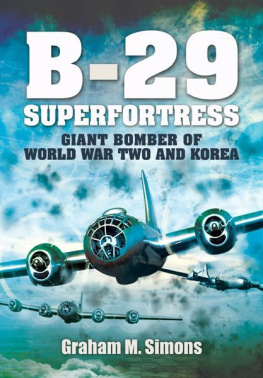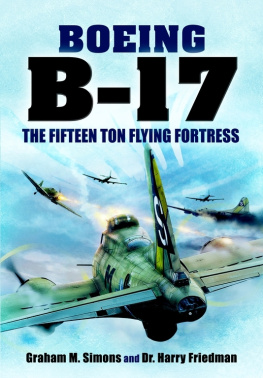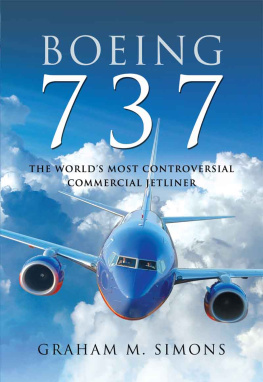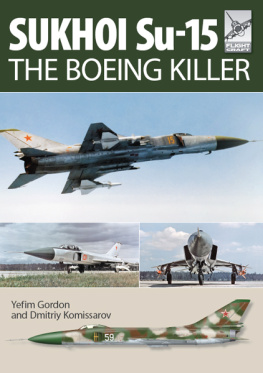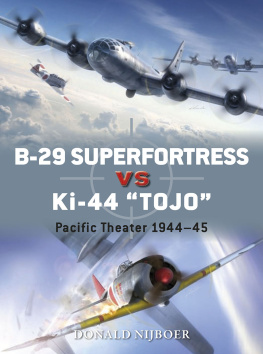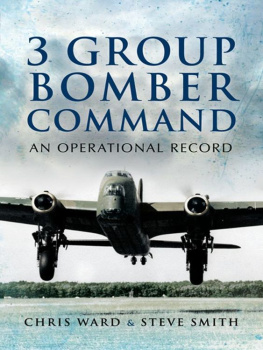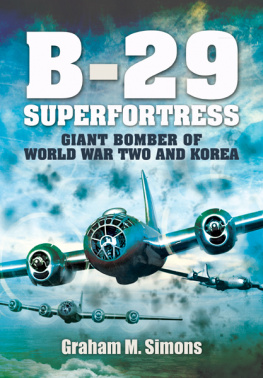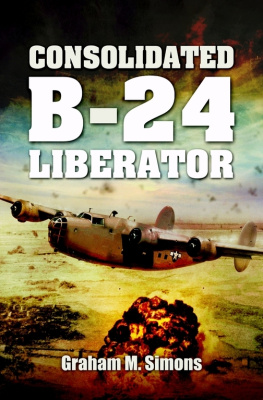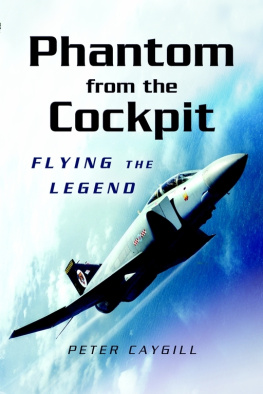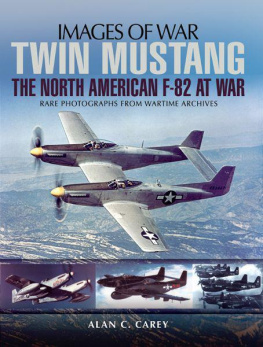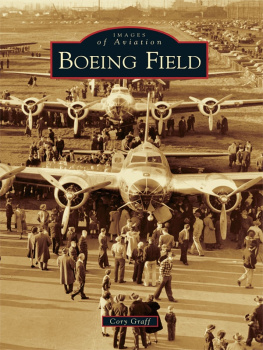
First published in Great Britain in2012 by
Pen & Sword Aviation
An imprint of
Pen & Sword Books Ltd
47 Church Street
Barnsley
South Yorkshire
S70 2AS
Copyright Graham M Simons 2012
ISBN 978 1 84884 753 8
PDF ISBN: 9781783376179
EPUB ISBN: 9781783376193
PRC ISBN: 9781783376186
First Published 1990 by Arms and Armour Press.
Revised and expanded by Pen & Sword Aviation 2012
The right of Graham M Simons to be identified as Author of this work has been
asserted by him in accordance with the Copyright, Designs and Patents Act 1988.
A CIP catalogue record for this book is
available from the British Library
All rights reserved. No part of this book may be reproduced or transmitted in any
form or by any means, electronic or mechanical including photocopying, recording
or by any information storage and retrieval system, without permission from the
Publisher in writing.
Printed and bound in England
by CPI UK
Pen & Sword Books Ltd incorporates the Imprints of Pen & Sword Aviation,
Pen & Sword Family History, Pen & Sword Maritime, Pen & Sword Military,
Wharncliffe Local History, Pen & Sword Select, Pen & Sword Military Classics,
Leo Cooper, Remember When, Seaforth Publishing and Frontline Publishing
For a complete list of Pen & Sword titles please contact
PEN & SWORD BOOKS LIMITED
47 Church Street, Barnsley, South Yorkshire, S70 2AS, England
E-mail:
Website: www.pen-and-sword.co.uk
CONTENTS
ACKNOWLEDGEMENTS
A project of this nature could not be undertaken without considerable help from many organizations and individuals.
Special thanks must go to Marilyn Phipps of Boeing Archives, Col. Richard L Upstromm and Tom Brewer from the USAF Museum, now the National Museum of the USAF for the provision of many photographs and details.
Background to the development and procurement of all the B-29 projects, can be found in published and unpublished primary source research material in the form of memoranda, policy statements and other documents from the Army Air Corps, the Navy, and Carl L. Norden inc., provided to us by Lynn Gamma and all in the U.S. Air Force Historical Research Center at Maxwell Air Force Base, Montgomery, Ala. The same applies the valuable services provided by the History Office of the Air Technical Service Command, Wright Field, Dayton, Ohio. Much other primary source documentation is also located in the National Archives and Records Administration at College Park, Maryland.
The archives of the National Advisory Committee for Aeronautics provided access to all their relevant material, as did the archivesof the Institute of Aircraft Production provided much information and a number of photographs, as did the RAF Museum, the Imperial War Museum and the Science Museum in London.
The late Roger Freeman provided photographs, as did Simon Peters and Martin Bowman and Peter Green from their respective collections.
Personal thanks must also go to David Lee, the former Deputy Director and Curator of Aircraft of the Imperial War Museum at Duxford, John Hamlin and to Vince Hemmings, the former curator of the East Anglian Aviation Societys Tower Museum at Bassingbourn.
The author is indebted to many people and organisations for providing photographs for this book, many of which are in the public domain. In some cases it has not been possible to identify the original photographer and so credits are given in the appropriate places to the immediate supplier. If any of the pictures have not been correctly credited, the author apologises.
INTRODUCTION
The Boeing B-29 Superfortress, along with the fallback design of the Consolidated B-32 Dominator should the Superfortress prove unsuccessful, were two very heavy bomber designs that originated in the latter part of the 1930s which were intended to replace earlier, smaller four engined designs.
The B-29 was the progenitor of a series of Boeing-built bombers, reconnaissance aircraft, trainers and tankers and airliners including the B-50 Superfortress, the C-97 Stratofreighter the Model 377 Stratocruiser. Later jet-powered models from Boeing carried on the lineage.
The B-29 was one of the largest aircraft to see service during World War Two. It was a very advanced bomber for this time period that included features such as a pressurized cabin, an electronic fire-control system, and remote-controlled gun turrets. Though it was designed as a high-altitude daytime bomber, in practice it actually flew more low-altitude nighttime incendiary bombing missions. It was the primary aircraft in the American fire-bombing campaign against the Empire of Japan in the final months of World War Two, and carried the two atomic bombs that destroyed Hiroshima and Nagasaki. Unlike many other bombers from this era, the B-29 remained in service long after the war ended, with a few even being employed as flying television transmitters for the Stratovision company. The type was finally retired in the early 1960s, with 3,970 aircraft in all built.

The classic image of the B-29 - high over Mount Fiji in Japan. (USAAF)

In close at the moment of weapon release. A pair of 19th BG B-29s release their bombs. (USAAF)
There were many early problems - The most common cause of maintenance headaches and catastrophic failures was the engine. Although the Wright R-3350 later became a trustworthy powerplant of large piston-engined aircraft, early models were beset with dangerous reliability problems. This problem was not fully cured until the aircraft was fitted with the more powerful Pratt & Whitney R-4360 Wasp Major in the B-29D/B-50 programme, which arrived too late for World War Two. Interim measures included cuffs placed on propeller blades to divert a greater flow of cooling air into the intakes, which had baffles installed to direct a stream of air onto the exhaust valves. Oil flow to the valves was also increased, asbestos baffles installed around rubber push rod fittings to prevent oil loss, and thorough pre-flight inspections made to detect unseated valves. This was as well as frequent replacement of the uppermost five cylinders for every 25 hours of engine time and the changing of entire engines every 75 hours!
This then is the story - of trials and tribulations to eventual success!
Graham M Simons
Peterborough
December 2011
ORIGINS
German troops had already marched into Vienna and Hitler proclaimed chief of the state when in March 1938 the US Army Air Staff, seeking an economical method for equipping the Air Corps, asked Boeing to submit ideas for pressurizing the cabin of the B-17 Flying Fortress.
Appropriations for purchase of military aircraft were extremely modest; all decisions were influenced by a need for economy. In 1938 only $62,602,727 had been appropriated for the overall support of Army aviationaircraft, maintenance, operating cost and officer and personnel traininga sum less than the cost of one capital ship!
Six desirables were evident in aircraft design trends of the times. Boeings spectacular pressurized-cabin Stratoliner had proved the wisdom of the first desirable. The bomber of the future must possess a pressurized cabin to provide improved comforts for the crew and permit the craft to fly above storms and flak. Secondly, it must have tricycle landing gear, to make for ease of handling on the ground and to improve landings for many years this remained a moot point, for tricycle landing gear cost the B-29 nearly two thousand pounds of extra weight. Thirdly, it must have greater speed; fourth, greater range; fifth, greater bomb capacity; and sixth, greater interchangeability between fuel and bombs. This meant larger fuselages.
Next page
